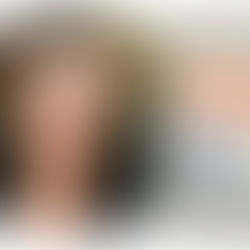Book Review: Barbara Kingsolver's Demon Copperhead

David Copperfield into Demon Copperhead. An even better version of Charles Dickens. Barbara Kingsolver masterfully recreated the plot of the 19th-century novel, setting it in Lee County, Virginia, while further highlighting the harsh reality of the lives of orphans left to the mercy of fate and senseless institutions.
According to the author, she wrote the book "for the kids who wake up hungry in those dark places every day, who've lost their families to poverty and pain pills, whose caseworkers keep losing their files, who feel invisible, or wish they were." And although only those who have read Dicken's David Copperfield (not so many these days, to be true) can draw parallels between the characters or events in the novel (which are indeed very creatively conceived), the main focus of the book remains the broken fates of children in an ineffective foster care system.
Damon Fields, nicknamed Demon Copperhead because of his read hair is born to a drug-addict eighteen-year-old mother who lives in a trailer. His father has died in an accident before he even was born. The boy is telling himself his miserable life story, which worsens when his mother marries a brutal man, consequently exposing Demon to physical and psychological violence and leading his powerless mother to relapse ending in lethal OD. This is when Demon is thrown into the wheels of the heartless foster care system where 'foster' means just security cheques and 'care' stands for hunger, child exploitation and total ignoring. "People will keep on wanting what they want, and you're on your own."
And these are not the dark times of the 19th century, it is the end of the 20th century the novel is talking about. However, Demon thinks Charles Dickens's novel perfectly reflects the situation of Lee County: "but Christ Jesus did he get the picture on kids and orphans getting screwed over and nobody giving a rat's ass. You'd think he was from around here." The surroundings and environment that Demon is circling around are depicted in such a hopeless way that you feel filthy scoundrel yourself.
But the biggest problem is not the poverty. It's drugs that kids begin to use very early, starting from pharm parties to oxy prescriptions. It seems that Demon with such a tragic end of his mother should stay away from using but when you're nothing and have nothing to seek for or dream about, drugs is just the only means to drag through a day. Demon is especially unlucky to hurt his knee during the football match, the misfortune that not only ends his rather happy patch in life but also is this breaking point when he starts going downhill with doctors gladly helping him to turn into a zombie stuffed with oxy and other painkillers. Like many other County people standing in line at the clinic on the first days of each month - no substantial treatment, just pills and huge profits to pharmaceutical companies.
"Addiction is not for the lazy. The life has no ends of hazards, deadly ambushes lying in wait, and that's just the drugs, not even discussing the people." When rolling downhill ends in a tragedy Demon must find strength in himself to leave the place that crushed him and get cleaned. Despite a bunch of people who really cared, it should be his own decision and his own will to add meaning to his life and change it. At least he agrees to try.
Despite his drug-addiction, demon has a talent. From a young age he draws cartoons of superheroes who come from his own imagination. This is his refuge, his therapy and his self-manifestation, and it finally becomes his salvation. And actually there's one dream that Demon has no luck to make come true - it's a wish to go and see the ocean. Reaching it would look like liberation from that dirty and nasty place he has grown up in and becoming open to the bigger opportunities in life, although perhaps more difficult then he's already experienced. But it's worth trying. Quoting Angus: "The world's a bottle, Demon. Gravity and shit. Don't expect miracles."

































Commentaires